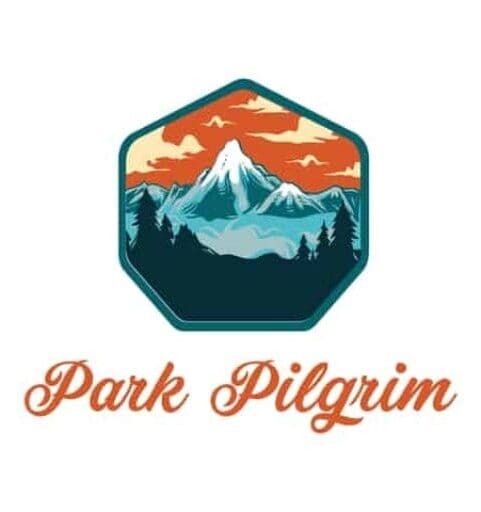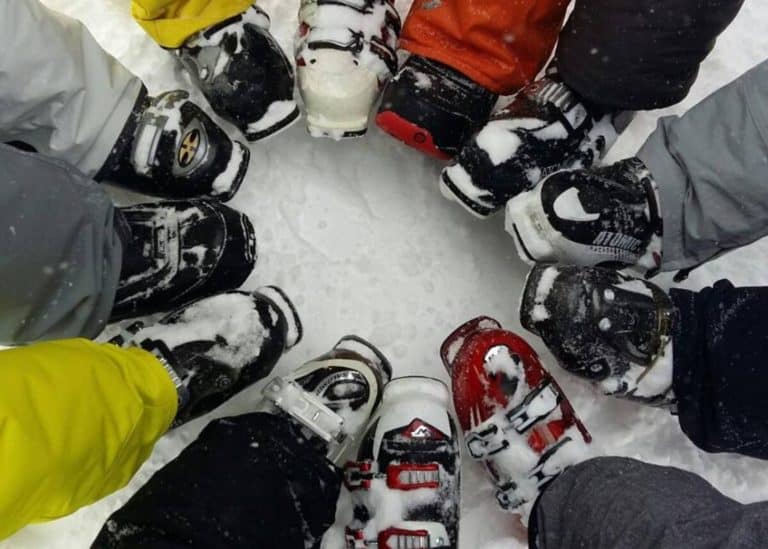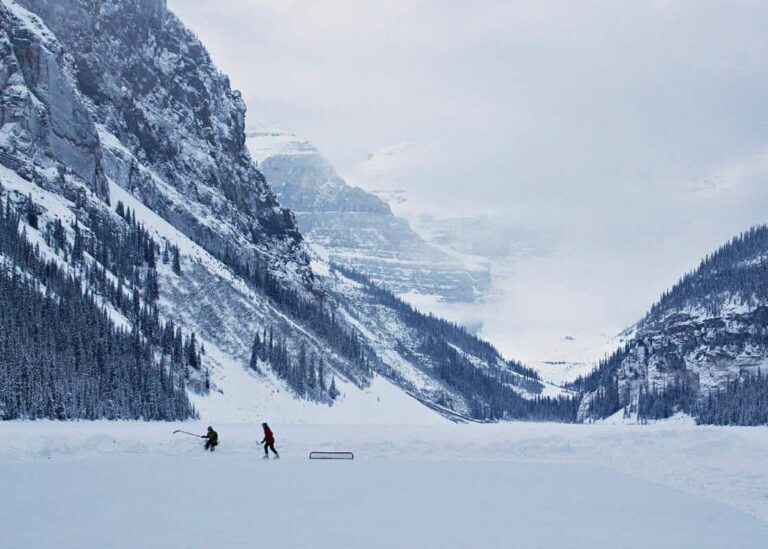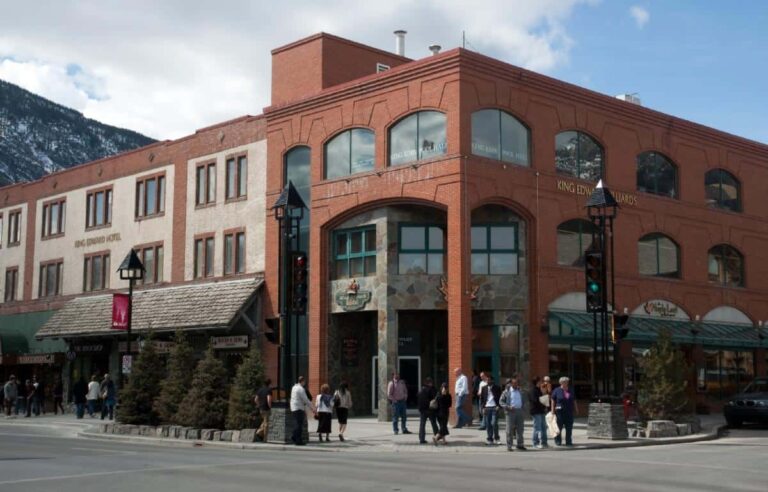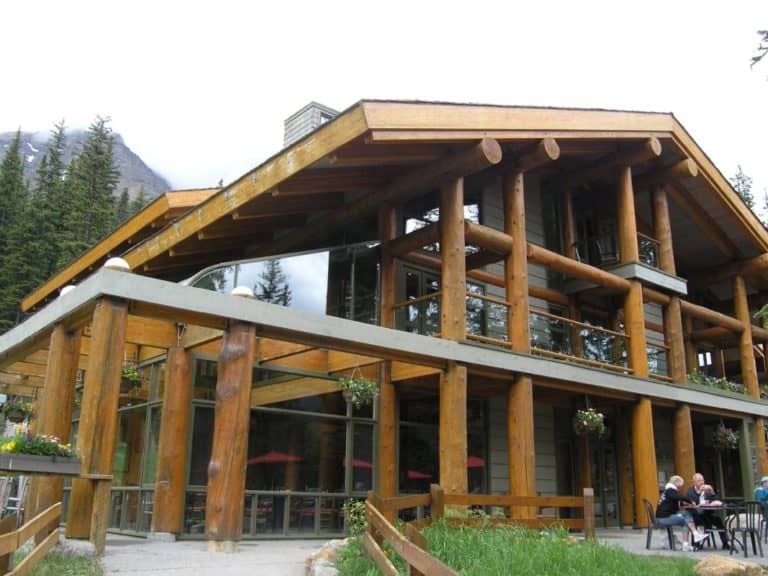Is Banff the Best National Park in North America?
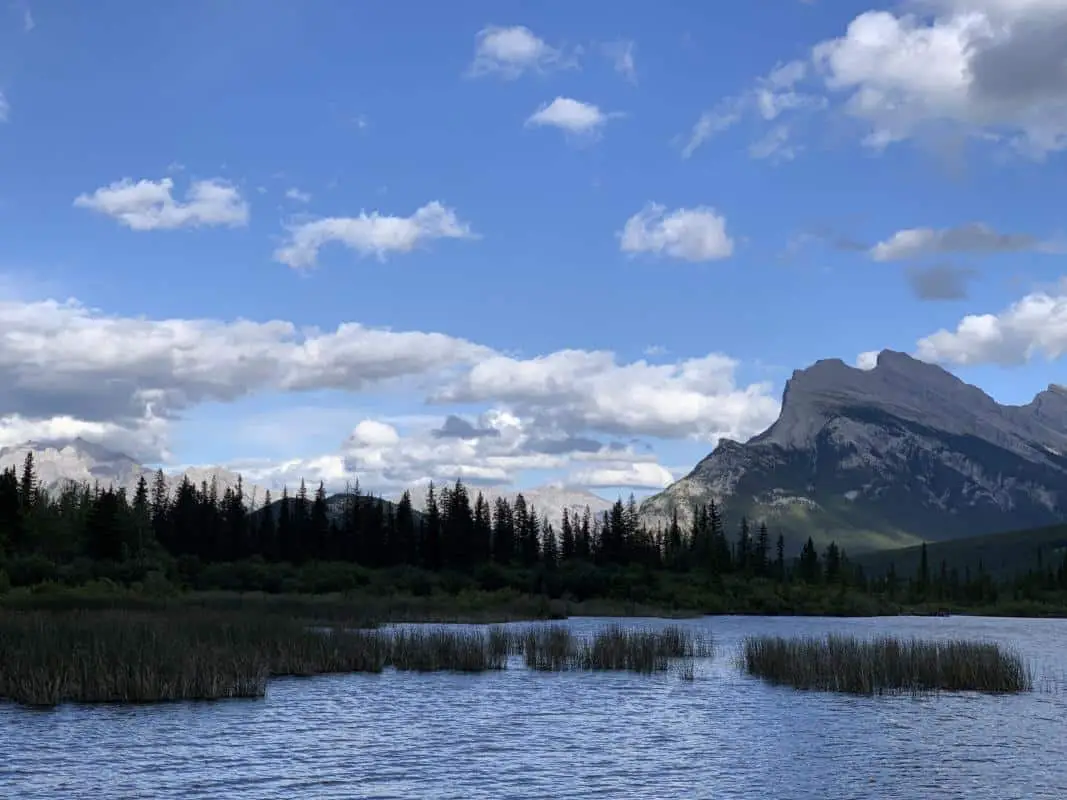
Banff National Park is the most popular national park in Canada regarding visitor numbers. But how does it hold up against the most famous national parks in the US? I’ve assessed Banff and the most popular parks in the US in different areas. What park comes out on top? You’ll find out below.
In essence, there’s no need for any comparison as Banff’s visitor numbers speak for themselves. And so does the park’s beauty. All the other parks in this overview are beautiful and worth visiting.
By all means, visit them all. At the same time, it’s interesting to compare the differences and see in what aspect Banff is better than (most) other parks and in what areas it’s maybe not the best choice.
You’ll find lists, graphs and tables on various subjects. For each category, I awarded the listed parks points to come up with a final verdict. It gives you an idea of where Banff stands among the most visited parks in the US and Canada.
If you want to read the conclusion immediately, scroll to the bottom of this page.
In any case, the overview provides a general idea about Banff. Seeing it compared to other parks will make it easier to decide whether Banff is an excellent park to visit. Okay, let’s dive in.
Visitor numbers
If visitor numbers are anything to go by to determine a park’s popularity, then Banff is the 8th most popular park in Canada and the US. In Canada, it’s by far the most popular. The numbers below are from 2021, a corona year. In 2019, the last year before corona, Banff had 4.16 million visitors.
For the comparison, I selected the eight busiest national parks in Canada and the US. You’ll find them below.

I will compare these eight parks in seven different areas. For each area, I will provide points. At the end of the article, you’ll find the accumulation of the points and the final ranking.
Size
Let’s have a look at Banff’s size compared to other national parks in Canada and the US. The bigger the park, the more there’s to see, right?
The park’s area covers an area of 6,641 km2 (2,564 sq mi). That makes it the 14th biggest national park in Canada and the 24th biggest in Canada and the US. A striking – but probably not too surprising – fact is that the (by far) biggest parks are found in the north of Canada and the US.
| PARK | SIZE | PROVINCE/STATE/TERRITORY |
|---|---|---|
| 1. Wood Buffalo | 44,972 km2 (17,364 sq mi) | Alberta/Northwest Territories |
| 2. Wrangell St. Elias | 33,683 km2 (13,005 sq mi) | Alaska |
| 3. Gates of the Arctic | 30,448 km2 (11,756 sq mi) | Alaska |
| 4. Nahanni | 30,000 km2(11,583 sq mi) | Northwest Territories |
| 5. Sirmilik | 22,200 km2 (8,571 sq mi) | Nunavut |
| 6. Ukkusiksalik | 20,880 km2 (8,062 sq mi) | Nunavut |
| 7. Denali | 19,186 km2 (7,408 sq mi) | Alaska |
| 8. Auyuittuq | 19,089 km2(7,370 sq mi) | Nunavut |
| 9. Tuktut Nogait | 18,181 km2 (7,020 sq mi) | Northwest Territories |
| 10. Katmai | 14,870 km2 (5,741 sq mi) | Alaska |
| 11. Katmai | 14,870 km2 (5,741 sq mi) | Alaska |
| 12. Thaidene Nëné | 14,305 km2 (5,523 sq mi) | Northwest Territories |
| 13. Death Valley | 13,793.3 km2 (5,326 sq mi) | California |
| 14. Glacier Bay | 13,045 km2 (5,037 sq mi) | Alaska |
| 15. Jasper | 11,228 km2(4,335 sq mi) | Alberta |
| 16. Qausuittuq | 11,008 km2(4,250 sq mi) | Nunavut |
| 17. Akami-Uapishkᵘ-KakKasuak-Mealy Mountains | 10,700 km2(4,131 sq mi) | Newfoundland and Labrador |
| 18. Aulavik | 12,200 km2(4,710 sq mi) | Northwest Territories |
| 19. Wapusk | 11,475 km2(4,431 sq mi) | Manitoba |
| 20. Lake Clark | 10,602 km2 (4,093 sq mi) | Alaska |
| 21. Torngat Mountainas | 9,700 km2(3,745 sq mi) | Newfoundland and Labrador |
| 22. Yellowstone | 8,983 km2 (3,468 sq mi) | Wyoming, Montana, Idaho |
| 23. Kobuk Valley | 7,085 km2 (2,736 sq mi) | Alaska |
| 24. Banff | 6,641 km2 (2,564 sq mi) | Alberta |
| 25. Everglades | 6,107 km2 (2,358 sq mi) | Florida |
Below, you’ll find the parks on the list of most popular parks in the US and Canada (according to annual visitor numbers) that are not among the 25 biggest parks in the US and Canada.
| PARK | SIZE | STATE |
|---|---|---|
| Grand Canyon | 4,926 (1,902 sq mi) | Arizona |
| Great Smokey Mountains | 2,114 km2 (816 sq mi) | North Carolina/Tenessee |
| Grand Teton | 1,300 km2 (502 sq mi) | Wyoming |
| Rocky Mountain | 1,074 km2 (415 sq mi) | Colorado |
| Zion | 593 km2 (229 sq mi) | Utah |
| Acadia | 199 km2 (77 sq mi) | Maine |
Age
The national parks in the US and Canada were among the first in the world to receive this label. It ensures their land is protected from development and other human activity to preserve the natural environment.
The older the park, the bigger its historical value. The two oldest national parks on this list (Yellowstone and Banff National Parks) are the second and fourth oldest national parks in the world, respectively.
The oldest park I gave 8 points, the second oldest park 7 points and so on.
| PARK | YEAR ESTABLISHED |
|---|---|
| Yellowstone | 1872 |
| Banff | 1885 |
| Rocky Mountain | 1915 |
| Acadia | 1916 |
| Grand Canyon | 1919 (February) |
| Zion | 1919 (November) |
| Grand Teton | 1929 |
| Great Smoky Mountains | 1934 |
Unesco Sites
Unesco stands for United Nations Educational, Scientific, and Cultural Organization. It aims to ‘contribute to the building of a culture of peace, the eradication of poverty, sustainable development and intercultural dialogue through education, the sciences, culture, communication and information’, as is stated on Unesco’s website.
As such, it appointed national parks worldwide as World Heritage Sites, which means this landmark or location has received legal protection under a global agreement overseen by Unesco.
Parks that are a Unesco World Heritage Site I awarded with one point, parks that don’t have this status got zero points.
| PARK | UNESCO WORLD HERITAGE SITE |
|---|---|
| Acadia | ✗ |
| Banff | ✓ |
| Grand Canyon | ✓ |
| Grand Teton | ✗ |
| Great Sm. Mountains | ✓ |
| Rocky Mountain | ✗ |
| Yellowstone | ✓ |
| Zion | ✗ |
Closest International Airport
When you want to visit a national park in Canada or the US, one of your first questions will be how to get there. Below you’ll find a list containing the closest international airport for each park.
The column with state/province lists the airport’s state or province (which might differ from the state/province where the national park is situated).
In many cases, there are airports situated closer to the park’s boundaries than the ones listed below, but in that case it’s not an international airport.
I gave the park with the closest international airport the maximum of 8 points, the number two 7 points and so on.
| PARK | AIRPORT | STATE/PROVINCE | DISTANCE TO PARK |
|---|---|---|---|
| Acadia | Bangor International Airport | Maine | 74 km (46 mi) |
| Rocky Mountain | Denver International Airport | Colorado | 102 km (64 mi) |
| Banff | Calgary International Airport | Alberta | 125 km (78 mi) |
| Grand Canyon | Harry Reid International Airport | Nevada | 194 km (121 mi) |
| Great Smoky Mountains | Charlotte Douglas International Airport | North Carolina | 259 km (162 mi) |
| Zion | Harry Reid International Airport | Nevada | 266 km (166 mi) |
| Grand Teton | Utah International Airport | Utah | 400 km (285 mi) |
| Yellowstone | Utah International Airport | Utah | 517 km (323 mi) |
Size of Town Inside or Near the Park
The table below lists all the towns located inside the national park in question. In general you can reason that the bigger the town’s population, the more facilities it has, like hotels, restaurants and shops. In case there is no town inside the park’s boundaries, I listed the most prominent town near the park’s boundary.
It appears that among these eight parks only two towns are inside park boundaries. I awarded points based on the town’s sizes. The biggest town got eight points, the second-biggest seven and so on.

* These towns border on the park or are very close to the park’s boundary.
Average Temperatures in Summer
When you book a vacation to a national park, you’ll probably want to admire its natural wonders (unless you want to go (downhill) skiing, for instance, which is possible in Banff, the Great Smoky Mountains and Grand Teton national parks).
Most tourists do so in the summer months because of the pleasant temperatures. That’s why you’ll find a list of the average high and low temperatures for June, July and August below.
Of course latitude and whether the park is mountainous or not play a significant role in the average temperatures. In the tables below, the first four tables (left on a desktop or tablet, the upper four on a phone) represent the warmest parks. The second set of four tables represent the coldest parks.








Public Transport
The availability of public transport makes a park more accessible and therefore more attractive to visit. Most parks on the list have some public transport facilities; Banff is the only one with a liner service taking visitors to all kinds of attractions inside and just outside the park.
I gave parks with (some kind of) public transport a score of one. Parks without public transport scored zero.
| PARK | PUBLIC TRANSPORT |
|---|---|
| Acadia (seasonal shuttle service) | ✗ |
| Banff (by bus to various stops in the park) and shuttle buses | ✓ |
| Grand Canyon (shuttle buses around the south rim) | ✓ |
| Grand Teton (summer shuttle) | ✓ |
| Great Smoky Mountains | ✗ |
| Rocky Mountain (shuttle buses) | ✓ |
| Yellowstone | ✗ |
| Zion (two shuttle routes) | ✓ |
And the Winner Is…
Alright, let’s find out what the final score is. How does Banff hold up against other famous parks in North America? Below you’ll find the scores in the eight categories mentioned above.
| Park | Size | Age | UNESCO World Heritage Site | Closest International Airport | Town inside or near park | Average tempe-rature in summer | Public trans-port | TOTAL |
|---|---|---|---|---|---|---|---|---|
| Banff | 7 | 7 | 1 | 6 | 7 | 2 | 1 | 31 |
| Rocky Mountain | 3 | 6 | 0 | 7 | 6 | 4 | 1 | 27 |
| Acadia | 1 | 5 | 0 | 8 | 5 | 7 | 0 | 26 |
| Grand Canyon | 5 | 4 | 1 | 5 | 3 | 5 | 1 | 24 |
| Great Smoky Mountains | 6 | 1 | 1 | 4 | 4 | 6 | 0 | 22 |
| Yellowstone | 8 | 8 | 1 | 1 | 2 | 1 | 0 | 21 |
| Grand Teton | 4 | 2 | 0 | 2 | 8 | 3 | 1 | 20 |
| Zion | 2 | 3 | 0 | 3 | 1 | 8 | 1 | 18 |
Based on the seven criteria explained above, it appears Banff National Park is the “best” national park in Canada and the United States. Surprising second is Rocky Mountain National Park, which scores well above the most popular park in North America: Great Smoky Mountains National Park.
Of course you should take this ranking with a grain of salt. Still, it provides a nice insight into how these parks compare. It also shows that Banff is worth visiting, but people who did, already know. 🙂
Enthusiastic about visiting Banff after reading this post? Then I recommend reading the article that lists the 15 things to avoid in Banff to have an unforgettable holiday.
